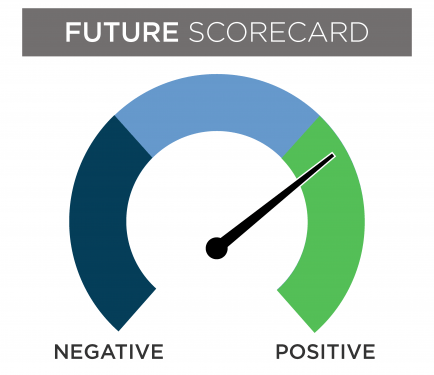May Monthly Economic Dashboard: Strong economic growth to continue
The Monthly Economic Dashboard from Nationwide Economics features timely data and commentary on employment, financial markets, consumer activity, business performance and inflation, along with dials and charts that provide the you with a scannable at-a-glance view.
Monthly Review
After real GDP posted a strong 6.4 percent annualized rate of growth during the first quarter, some economic readings slowed for April and are indicative that the recovery continues to be uneven from month to month.
Retail, Jobs & Inflation
• Retail sales flatlined, in a hangover from March’s stimulus check fueled spending spree (although March data were revised higher).
• Job gains saw a sharp slowdown during April as employers increasingly have difficulty filling open positions.
• Business surveys also pulled back slightly from March’s highs, although still point to strong expansion. But with the economy moving closer to a full reopening and in-person activities primed for a surge, job gains and total spending should accelerate sharply in coming months.
• While inflation has spiked during the transition out of the pandemic, the Fed views these price movements as transitory and they are not expected to prompt a shift in monetary policy anytime soon. Equity markets fell back from their recent highs in May, but earnings expectations for the rest of the year remain strong.
Learn more in the monthly review on page three.


Outlook
Consumer Spending
The surge in consumer spending expected this year in response to pent-up demand from during the pandemic and faster income gains should accelerate the business sector recovery, too. Many of the areas hardest hit by pandemic’s impacts (i.e. – travel, retail, restaurants) should see the fastest growth this year and into 2022 as consumers are fully allowed to resume in-person activities.
Staffing Issues
Hiring this year has been led by services industries while startups have increased to fill the gaps created by companies that closed due to COVID. There will still be challenges for businesses, however, as COVID has changed the way consumers interact and spend, with an increasing shift to digital platforms.
In the near term, supply chain disruptions in many sectors could limit production capacity (and push up prices), especially for the manufacturing sector, while a rising number of businesses (focused on small business services) report difficulty finding qualified workers. These issues should dissipate as the pandemic fades in the rearview mirror while the positive feedback loops of the maturing economic expansion should drive ongoing solid growth for businesses.

